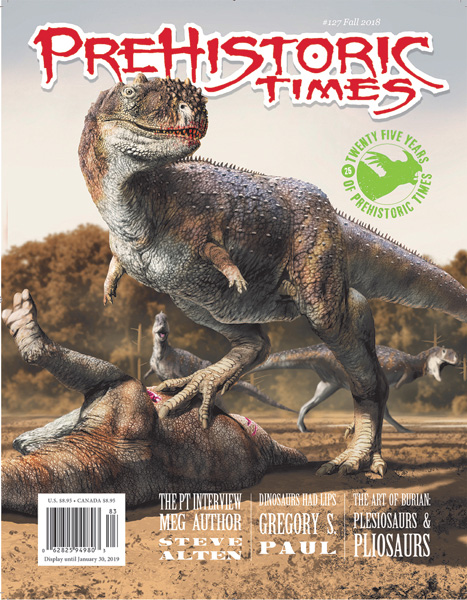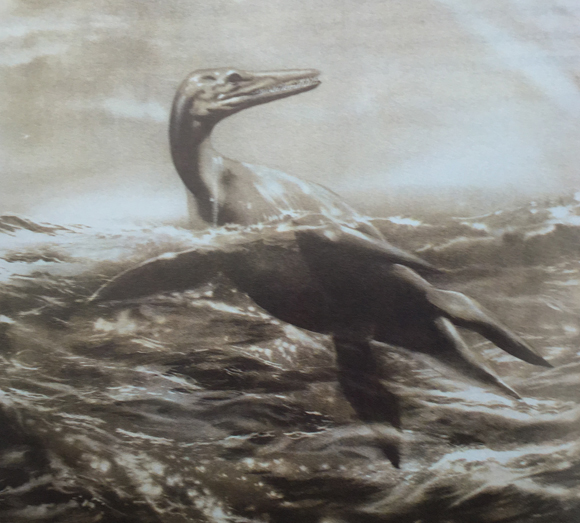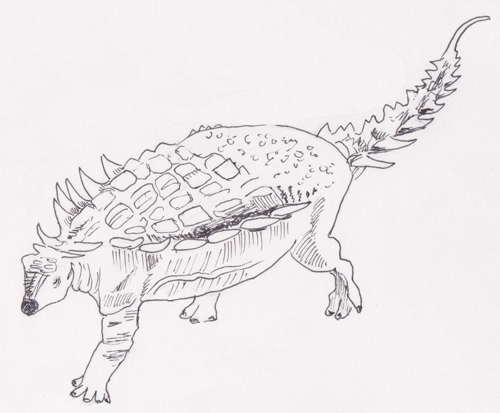Prehistoric Times New Issue 127 Reviewed
A Review of Prehistoric Times Magazine (Issue 127)
Autumn is very much with us, the long summer seems a distant memory already. Our chums across the Atlantic refer to this season of mellow fruitfulness as the Fall, so time to review the latest copy of “Prehistoric Times” magazine, issue 127 (autumn/fall). This issue of the quarterly magazine features “Prince Lizard” – Rajasaurus, on the front cover, the illustration has been created by renowned palaeoartist J. A. Chirinos.
The Front Cover of Prehistoric Times Issue 127 (Autumn/Fall 2018)

Picture credit: Mike Fredericks/Prehistoric Times
The “Prehistoric Times” Interview: Steve Alten
Mike Fredericks has included a summary of his recent YouTube interview with Steve Alten, the author of the book “Meg”, upon which the summer blockbuster movie of the same name starring Jason Statham was based. The interview script is accompanied with some amazing illustrations featuring the giant prehistoric shark but look out for a marine reptile too. On the subject of marine reptiles, New Zealander John Lavas discusses the artwork of Zdeněk Burian that portrays plesiosaurs and pliosaurs, as he continues his comprehensive overview of the work of the influential Czech artist and illustrator.
Burian’s Painting of the Pliosaurid Peloneustes philarchus Features in Prehistoric Times

Picture credit: John Lavas/Prehistoric Times
Dinosaurs with Lips
The debate as to whether dinosaurs had lips is discussed at length in a most informative article written by Gregory S. Paul, we wait to see whether future editions of “Prehistoric Times” will include the counter argument, perhaps Tracy Lee Ford, a regular contributor, can provide a summary of the evidence that contradicts this hypothesis. For the time being, the aforementioned Tracy Lee Ford focuses on the skull of Triceratops in his regular feature “How to Draw Dinosaurs”. This article is part one of a two part series, in the winter edition, the emphasis will be on drawing the body of this famous horned dinosaur.
Jordan Mallon of the Canadian Museum of Nature continues the horned dinosaur theme with an article on the safe removal of a Chasmosaurus skull from a dig site located near the South Saskatchewan River in Alberta.
As well as contributions from leading scientists, this magazine provides a platform for dinosaur fans to showcase their artwork. A highlight for us was reading about the Rajasaurus inspired artwork produced by students at Brandywine Heights High School in Pennsylvania. Look out also for the superb Leptoceratops painting supplied by Mohamad Haghani and Mike Landry’s beautiful Platybelodon artwork that is included in Phil Hore’s article on the “shovel tuskers”.
For further information on “Prehistoric Times” magazine and for details how to subscribe: Prehistoric Times Magazine.
Hunting Behaviour in Allosaurus
Jack Wilkin writes about Allosaurus, sometimes referred to as the “Lion of the Jurassic”. The hunting behaviour of this iconic theropod is explored and the author suggests that Allosaurus hatchlings probably fed on insects before moving on to vertebrates. Evidence for Allosaurus/prey interaction is presented and the theory that Allosaurus used its jaws like an axe to overcome its victims is explained.
Allosaurus and Hunting Behaviour is Explored

Picture credit: Everything Dinosaur
What with information about new prehistoric animal models, fossil discoveries, classified advertisements and reviews of books related to palaeontology, there is certainly a lot going on inside the latest edition. Look out also for a review of Tracy Lee Ford’s and Mike Frederick’s book “What Colour were Prehistoric Mammals?” which also features in this jam-packed publication.
Visit the Everything Dinosaur website: Everything Dinosaur.


